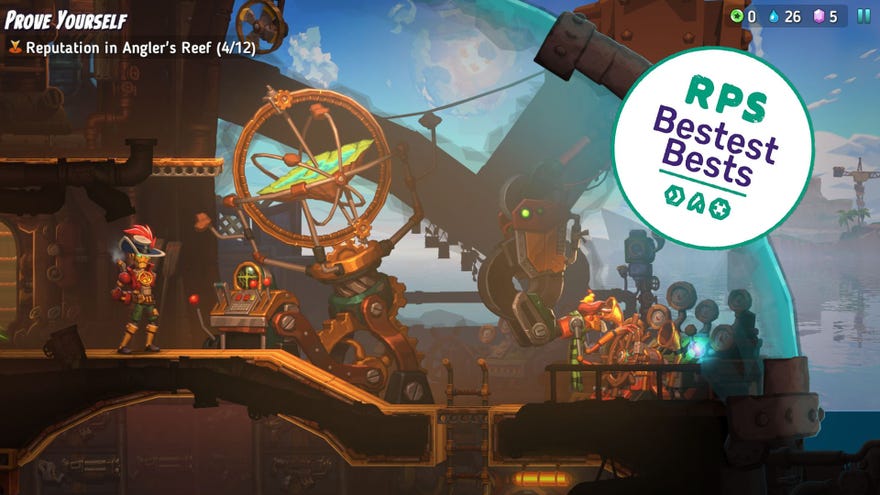SteamWorld Heist 2 review: a tactical trick shot across the bow of lesser strategy games
Heist, heist, baby
I've yet to discover a SteamWorld game I don't like. Whether plundering the earth in SteamWorld Dig 2 or mucking about with magic in SteamWorld Quest, these are solid and approachable adventures that enthusiastically embrace whatever theme the developers have decided upon. Cowboys? Sure. Wizards? Why not. It barely matters, as long as it results in some good puns. As a studio, Thunderful have a reputation for hopping from one style of game to the next, boiling entire genres down to their essence, and reconstituting them with competence and style to exist within a now-familiar steampunk world of colourful pals and Saturday morning cartoon jokes. The studio is a perpetual notion machine. Yes, with SteamWorld Heist 2, they're revisiting the sci-fi bullet-bouncing of their 2016 tactics game SteamWorld Heist, but they're also introducing significant changes to create a compulsive XCOM-like full of sea-faring submariners that may be their best work yet, even against a back catalogue of blinders.
As with other SteamWorld games, it's framed in a light, family-friendly story featuring dastardly dieselbots and mildly troubled heroes. You are Captain Leeway, commander of a pirate submarine bobbing within a "sea" which is really a planet-sized bowl of water floating in space. Unfortunately, the water is going bad, making the clean H2O required for steambot engines scarce. Our heroes are out to discover what's behind this water crisis.
The characters are simple but genial. The one-armed Captain is living in the shadow of his notorious mother. Stiff-upper-lipped grenadier Wesley seeks an honourable death, while sniper Daisy is just happy to be in the belly of a submarine infamous for bothering the enemy Navy. You unlock more crew members as you stop in bars, each chattering away with optional dialogue as the tale goes on. My favourite is the mercenary "Crowbar" who squawks with every line of dialogue and who seemingly values a paycheck above all else. Plenty of fun Naval antagonists show up too, indulging in upper class chit-chat and sporting pseudo-British names like Babblesthrop and Krinkleswiffer.
Structurally, it's a little different to the first game, which saw you navigating a simple network of stellar stopovers, using a spacey map similar to something you might find in FTL. Here you control the submarine directly instead, sailing around a lush world map of tropical waters, the clouds parting and revealing more of the map as you explore. Eventually, you'll be avoiding submerged mines, diving below the surface, and rising to fire broadsides at Navy vessels. It's a bit like playing an arcadey twin stick shooter between the meatier tactical missions. Except the ship will do the shooting for you automatically - you just need to point it in the right direction.
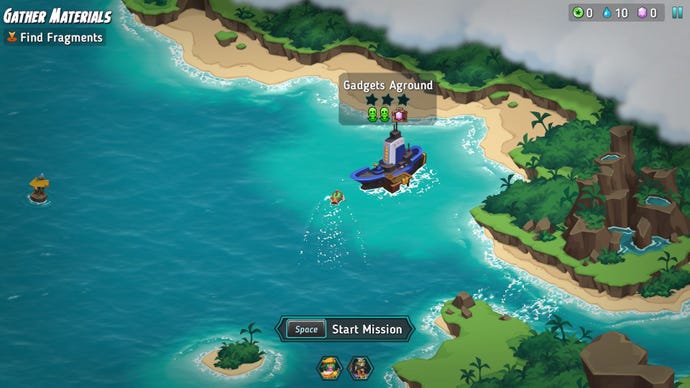
The early blue waters offer a limited smattering of missions (little outposts promising a "star" rating on completion) plus secret locations that require you to boost your way upstream into hidden lagoons, where you might find some flotsam containing a new weapon or a few Gallons (the game's primary currency). But these are mere paddling pools to the later seas, such as the maze of arctic waters that let you sail wilier waters before you commit to the heavier and harder jobs.
It is in such missions where the really compulsive tactical stuff shines. These are battles full of bouncing bullets, XCOM-like movement, and moreish decision-making. The arms of your bots are unsteady, swaying gently as they aim. Some weapons, like the Sniper rifle, come equipped with a helpful aiming laser, but others, like the SMG, don't have such a guide, meaning that shots aren't always a sure thing. And that's especially true when those pot shots try to take advantage of the ricocheting qualities of the game's billiard-like gunplay. You sometimes take a gamble by pulling the trigger not knowing exactly how things will go, which delivers a tiny thrill that happens at least once every fight.
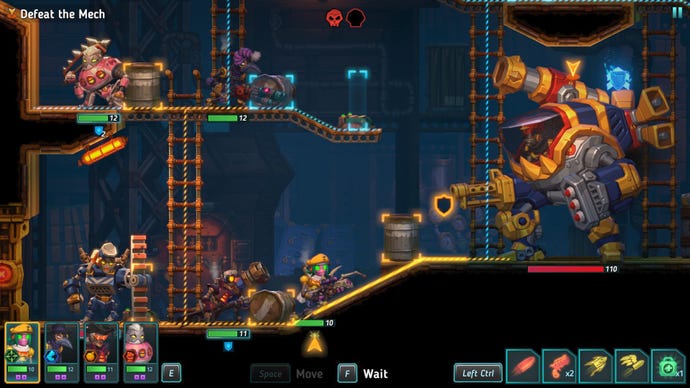
Some characters, like the Sniper, can unlock skills that steady the sway and extend the reach of their laser pointers. Other classes, like the machine-gunning Reaper, will get an extra turn after landing a killing blow. The Flanker can take an action after sprinting (normally not allowed) which will remind any XCOM player of all the shotgun-wielding Assault troopers who saved many a day (or got vaporised for charging into the wrong place).
At this point Heist 2 could have left the classes alone, like any other turn-based strategy game. Instead, it pushes things a little further. Here, you can use a limited resource called "cogs" to mix and match the skills of each class (up to a point). An Engineer, who can create a piece of cover at will, might spend a cog to get the "sidestep" ability of a Flanker, allowing them to escape in moments when they are trapped on either side by clobbering enemies. A born Reaper might covet the Sniper's ability to throw down a smoke bomb that makes him invisible for a turn. Ah, death from the shadows. Delicious.
There is a catch, of course. If you want a character to unlock these skills, they have to train with that class' weapon and level up the hard way. At first it feels like this is a slow way of creating multiclass characters. But really it is a means of eliminating class altogether (#KarlMarx), since any character can use any weapon and become, in theory, a superpowered generalist. Each character also comes with their own innate abilities: Wesley can lob grenades as a free action, for example, while veteran buccaneer Judy can shame her enemies from across the map, giving them a tonguelashing so fierce it completely ignores armour.
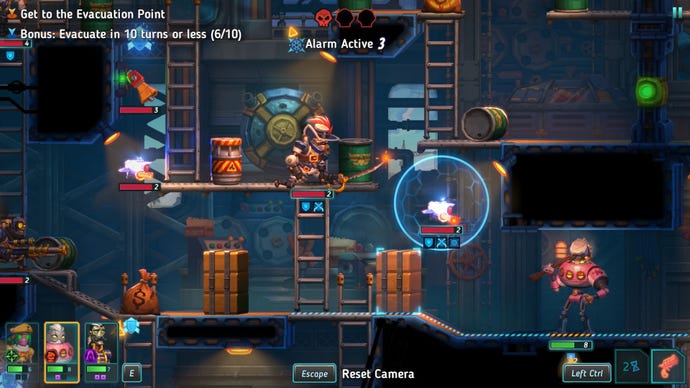

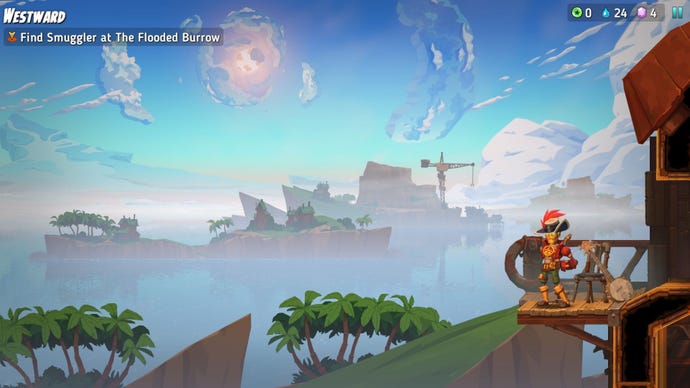
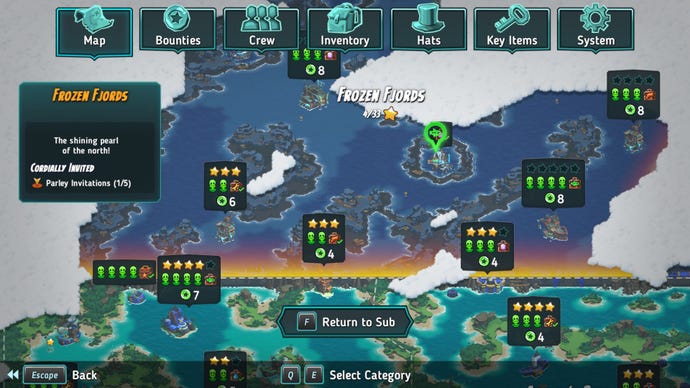
It can be a little cumbersome when it comes to choosing ingredients for each bot's stew of skills, perhaps a result of the simplified loadout screens. But I'd rather have a clean set of boxes that required some extra clicks than a mess of menus. I did also find myself investing far more in some classes than others. The explosives-obsessed Boomer has health increases that are universally useful, for example, while the Reaper's concentration on critical hits, while intriguing, just didn't feel as adaptable or necessary. In fact, outside of the first character who fulfills the role of Reaper, I basically abandoned that class. Though I'm certain there is some brutal build you could make by combining those skills with that of the Flanker, who's nippy movement could result in robotic massacres.
Not that I sympathise with the enemies too much. Navy commanders can issue "edicts", buffs that boost the armour and firepower of their fellow tin can men. The Rattlers, meanwhile, are old bots who have "replaced all their metal with bones" as part of a high seas cult. This allows you to fire rounds right through them, which is a blessing in levels where the scamps form a neat line to be blasted. And a curse in later levels where an ice block may stand behind your target, containing yet another enemy, frozen solid until a stray bullet wakes them up and adds to your troubles.
There are some entertaining boss battles too, such as an admiral who shows off with improbable trick shots, his glowing bullet boinging around the level for a comedic amount of time, as you try to figure out who he is even aiming at. It always looks like he has fluffed his shot, until that last bounce sends it directly at your Brawler's noggin. Then there is Big Steve. Ah, Big Steve.
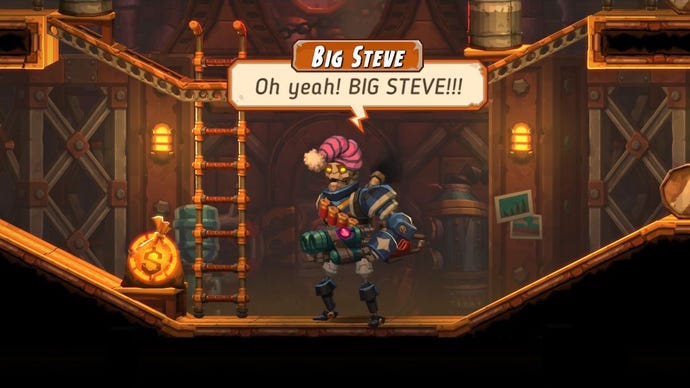
There is sometimes the traditional XCOM problem of running into a room and activating a whole other group of enemies. Which can make opening some doors feel like an instant difficulty multiplier, a sometimes-irrecoverable misstep. On the plus side, there are no consequences for failing a mission at all. Even a total team wipe results in nothing but some lost time. Aborting a mission partway through is likewise no big deal. The spirit of forgiveness runs so deep that you are prompted with the option to change the game's difficulty mode before every single mission, allowing you to tailor the challenge as you go along.
Still, each bot in your party can only stomach one mission per day before they need a rest, at which point you can dock at the nearest bar to end the day and cash in some "bounty" chips for extra goodies. Aside from being hubs where you can buy items and recruit new members to your squad of clanky misfits, these floating pubs host some of the game's shanty-adjacent musical numbers. I'm a fan of diegetic songs in video game hubzones (shout out to the band in Endless Dungeon's saloon), so I find these upbeat sea-songs give the lopsided bars a sense of breezy homeliness. Though I could see some people immediately turning the music off in the options. My friends, why do you not welcome the earworm's embrace? There is peace here, in listening to crooning sailors as you try to sleep.

I've spent a lot of time here describing the actions and cogwheels of the game, and not so much the feelings it elicits. But that's maybe because the particular joy of SteamWorld games is so simple and pure. From a designer's standpoint, they are little metal marvels, proof of a long-practised craft. But from a player's perspective they are games where the pleasure is so plain to feel that I barely want to even discuss it. I don't have to explain why I like the feeling of a cat's fur, or the taste of chocolate. I don't feel a compulsion to examine why Lego feels satisfying to click together, or to discuss what is good about a sunny day. These things are simple totems of happiness. SteamWorld feels this way for me. The worst you can say of them is that they play safe. And yet a safe harbour is something every player of games can use.
Once again, I've yet to play a SteamWorld game I didn't like. SteamWorld Heist 2 is not bucking that trend. After 15 hours I still haven't finished it, but my endgame sense is tingling and I'm eager to see it through. If I was asked to name the most reliably entertaining franchise in video games today, I would perhaps point to Thunderful's toybox and say simply: "Them 'uns". These games know what they're doing, they communicate it succinctly, and most importantly, they let the player happily move on when the game is finished. These are not games of "endless replayability", they are toys of endful playability, of conclusiveness, closure and clemency. If switching off after reaching an "ending" in a piece of Destiny 2 DLC is like finishing a McDonalds yet feeling hungry again two hours later, then watching the credits roll on a SteamWorld game is like finishing a decent home cooked meal and walking away full of unthinking contentment. I'm keen to keep sailing north, find a homey pub on the horizon, and eat that final dish.
